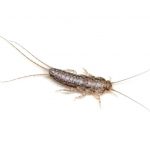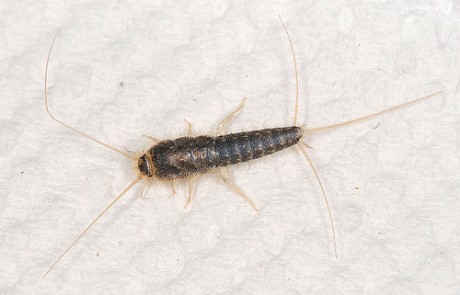Votre panier est actuellement vide !

The silverfish
Silver gray color, with metallic reflections,These insects are also called silverfish.their body is tapered, wingless and covered with thin scales.they are characterized by the presence of 2 long antennas on the head and 3 rigid filaments at the end of the abdomen.the size of adults reaches 13 mm at their full development.
Latin Name: Lepisma saccharina
Description:Silver-gray in color, with metallic reflections.These insects are also called silverfish.Their body is tapered, wingless and covered with thin scales.They are characterized by the presence of 2 long antennae on the head and3 rigid filaments at the end of the abdomen.The size of adults reaches 13 mm at full development.A similar insect is called the thermobia but it is rather gray-brown with dark spots.
Reproduction: During her lifetime a female lays 10 to 100 eggs, which she deposits one by one in cracks and crevices, and sometimes in the open. Hatching takes 20 to40 days and the young already have the appearance of adults.They develop slowly and reach their maximum size only after 3 years.At this age the females are ready to lay eggs.The silverfish have a life expectancy of 7 years and withstand a fast of 300 days.
Habits: Silverfish and thermobites are found in apartment buildings,offices, bakeries, libraries, private residences etc…Silverfish are found throughout the house, but especially in humid areaswhere the temperature is 22 °C to 27 °C. The thermobia is found mainly in warm and humid places where the temperature varies between 27 ° C and 41 ° C, such as around hot water tanks and heat vents. These insects prefer dark places and hide when disturbed. They feed on starch products, resin, glue and other by-products found in textile products such as bookbinding and wallpaper. They occasionally infest wheat and oat flour.
Prevention:Before starting any control program, the main areas of infestation should be detected.To detect them, you can use a glass that you have covered on the outside with paint adhesive paper ( masking tape). The silverfish will be able to climb on the glass and will not be able to get out because it cannot climb on smooth surfaces. You can put a cardboard coated with a mixture of water and flour in the glass to attract them. Next, the infested areas should be cleaned thoroughly by vacuuming where they are likely to hide and grow. Treatments can be applied but should be administered by specialists to ensure that all sources of infestation are treated.
